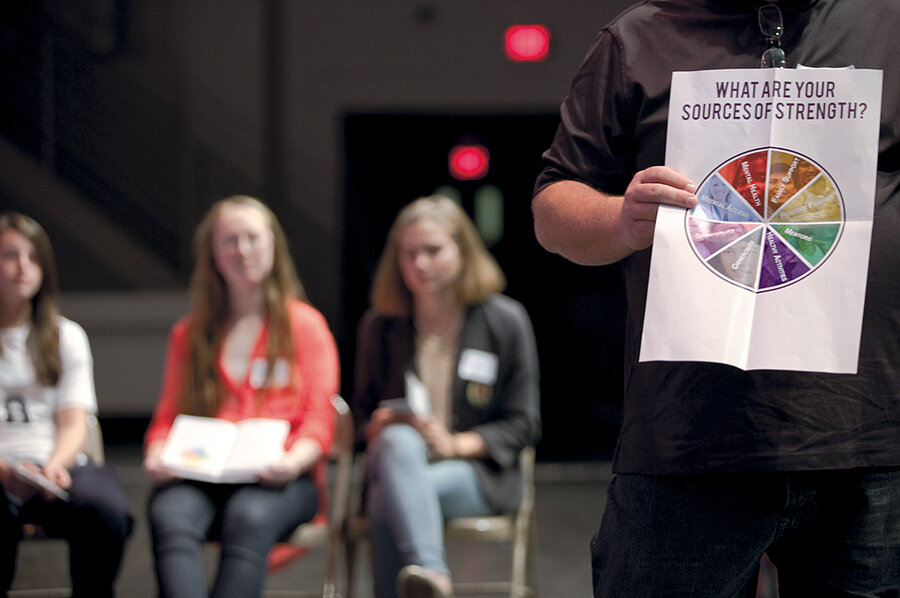Surfacing problems to solve them
Loading...
To expose or not to expose? That is a question that any responsible publication has to weigh. Should details of a military operation or spy program be kept quiet for the public good? Or does publicity prevent the government from overstepping its bounds? Should a troubling news event – a violent crime, a natural disaster – be described in detail, the better to understand the nature of the problem and galvanize assistance? Or is it wiser to tone down the report to keep the public from being disturbed and (in the case of a crime) to decrease possible copy-catting?
The problem of teen suicide takes this dilemma to another level. “Most people are uncomfortable with the topic,” notes the Centers for Disease Control. But not talking about it can cause those in need of help to think they are alone in their pain.
Connecting with others, as you’ll see in Stacy Teicher Khadaroo’s Monitor cover story (click here), is important in prevention. And yet details about teen suicide – especially graphic or emotional details – can glamorize it, especially among the impressionable young. Mental-health specialists have observed too many teen suicide clusters to have doubts about the contagion of the idea.
The rise of social networks complicates the problem. Among 14- to 17-year-olds, 9 out of 10 are on social media, according to a 2013 study by the Pew Research Center. These networks are supposed to connect friends and make people closer. But Facebook, Twitter, Pinterest, and the like can be unfriendly and alienating to those who spend a lot of time on them. That is especially true for teens, the most socially networked age group and the most sensitive to what others think about them.
Even without the ugliness of cyber bullying, a social network can be a difficult environment for a young person. Imagine posting a status update, profile picture, or clever text message and getting a collective “meh.” Or watching as the popular kid rakes in dozens of Facebook friends and Twitter followers. Being slighted in social media is not much different from being slighted in the school cafeteria – except that teachers, parents, and friends aren’t usually on the sidelines ready to intervene.
Stacy’s report looks at new ways prevention specialists have developed to build bridges out of loneliness and alienation, to prevent the sort of downward spiral that leads a young person to entertain dark thoughts. As Stacy writes, the stories of lives saved rarely make headlines.
A coalition of organizations, including the Annenberg Public Poicy Center and the American Foundation for Suicide Prevention, has developed guidelines for reporting on suicide aimed at containing the contagion problem. Among them: Don’t describe a suicide as “without warning,” deemphasize emotional images of grieving families and friends, be careful about calling a spate of suicides an “epidemic.” In other words, inform without sensationalizing.
If contagion exists on the sensitive subject of teen suicide, it exists to some degree with routine news. The Monitor’s founder, Mary Baker Eddy, recognized the problem of idea contagion. She designed the Monitor to inform without propagating fear, crime, depression, or mental maladies. A healthy society is one where the media surface problems – even problems that people would rather not talk about – not to stand aghast at them but so that they can be understood, addressed, improved, and solved.
John Yemma is editor of the Monitor. He can be reached at editor@CSMonitor.com.








